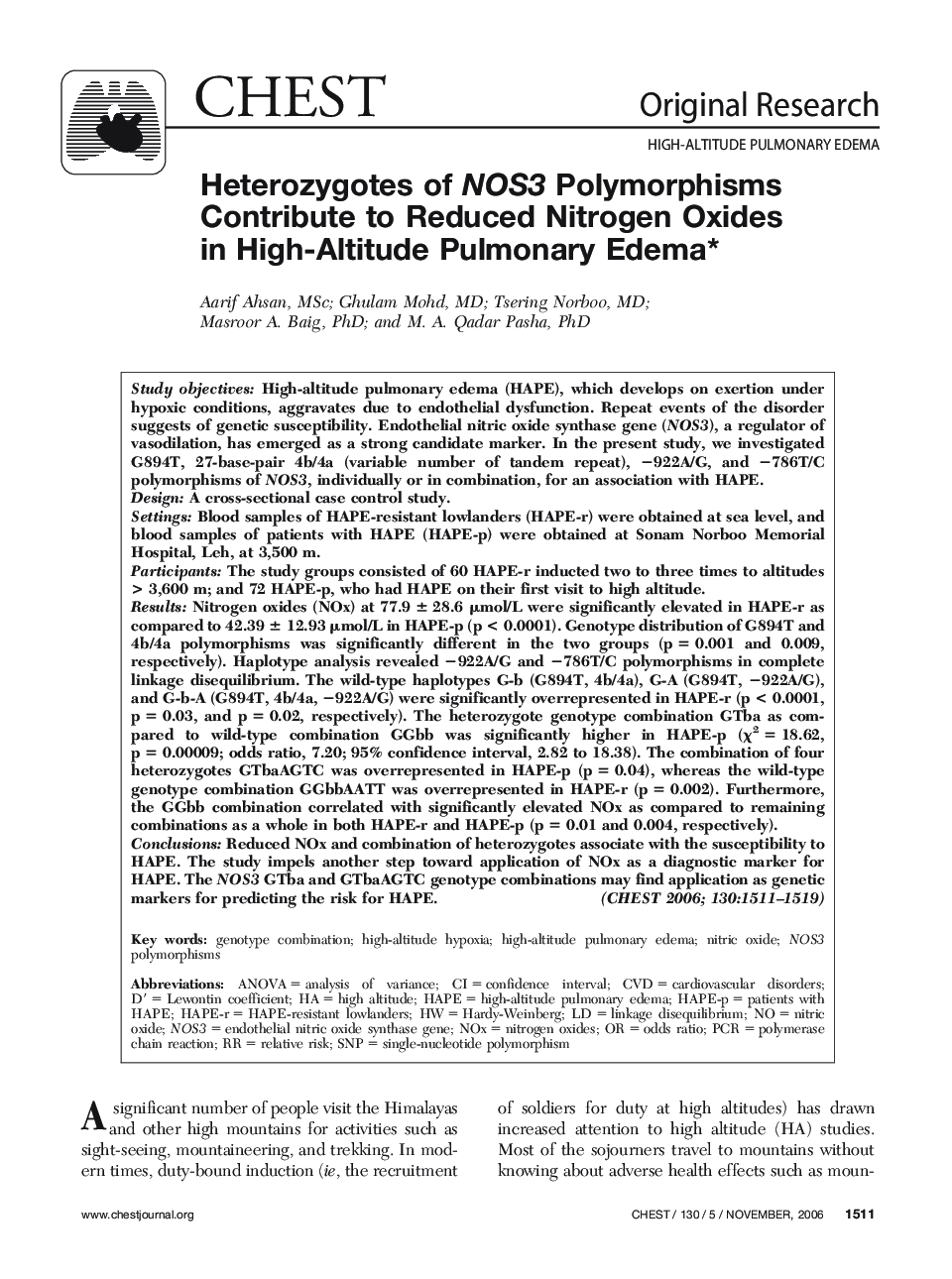| Article ID | Journal | Published Year | Pages | File Type |
|---|---|---|---|---|
| 2905476 | Chest | 2006 | 9 Pages |
Study objectivesHigh-altitude pulmonary edema (HAPE), which develops on exertion under hypoxic conditions, aggravates due to endothelial dysfunction. Repeat events of the disorder suggests of genetic susceptibility. Endothelial nitric oxide synthase gene (NOS3), a regulator of vasodilation, has emerged as a strong candidate marker. In the present study, we investigated G894T, 27-base-pair 4b/4a (variable number of tandem repeat), −922A/G, and −786T/C polymorphisms of NOS3, individually or in combination, for an association with HAPE.DesignA cross-sectional case control study.SettingsBlood samples of HAPE-resistant lowlanders (HAPE-r) were obtained at sea level, and blood samples of patients with HAPE (HAPE-p) were obtained at Sonam Norboo Memorial Hospital, Leh, at 3,500 m.ParticipantsThe study groups consisted of 60 HAPE-r inducted two to three times to altitudes > 3,600 m; and 72 HAPE-p, who had HAPE on their first visit to high altitude.ResultsNitrogen oxides (NOx) at 77.9 ± 28.6 μmol/L were significantly elevated in HAPE-r as compared to 42.39 ± 12.93 μmol/L in HAPE-p (p < 0.0001). Genotype distribution of G894T and 4b/4a polymorphisms was significantly different in the two groups (p = 0.001 and 0.009, respectively). Haplotype analysis revealed −922A/G and −786T/C polymorphisms in complete linkage disequilibrium. The wild-type haplotypes G-b (G894T, 4b/4a), G-A (G894T, −922A/G), and G-b-A (G894T, 4b/4a, −922A/G) were significantly overrepresented in HAPE-r (p < 0.0001, p = 0.03, and p = 0.02, respectively). The heterozygote genotype combination GTba as compared to wild-type combination GGbb was significantly higher in HAPE-p (χ2 = 18.62, p = 0.00009; odds ratio, 7.20; 95% confidence interval, 2.82 to 18.38). The combination of four heterozygotes GTbaAGTC was overrepresented in HAPE-p (p = 0.04), whereas the wild-type genotype combination GGbbAATT was overrepresented in HAPE-r (p = 0.002). Furthermore, the GGbb combination correlated with significantly elevated NOx as compared to remaining combinations as a whole in both HAPE-r and HAPE-p (p = 0.01 and 0.004, respectively).ConclusionsReduced NOx and combination of heterozygotes associate with the susceptibility to HAPE. The study impels another step toward application of NOx as a diagnostic marker for HAPE. The NOS3 GTba and GTbaAGTC genotype combinations may find application as genetic markers for predicting the risk for HAPE.
